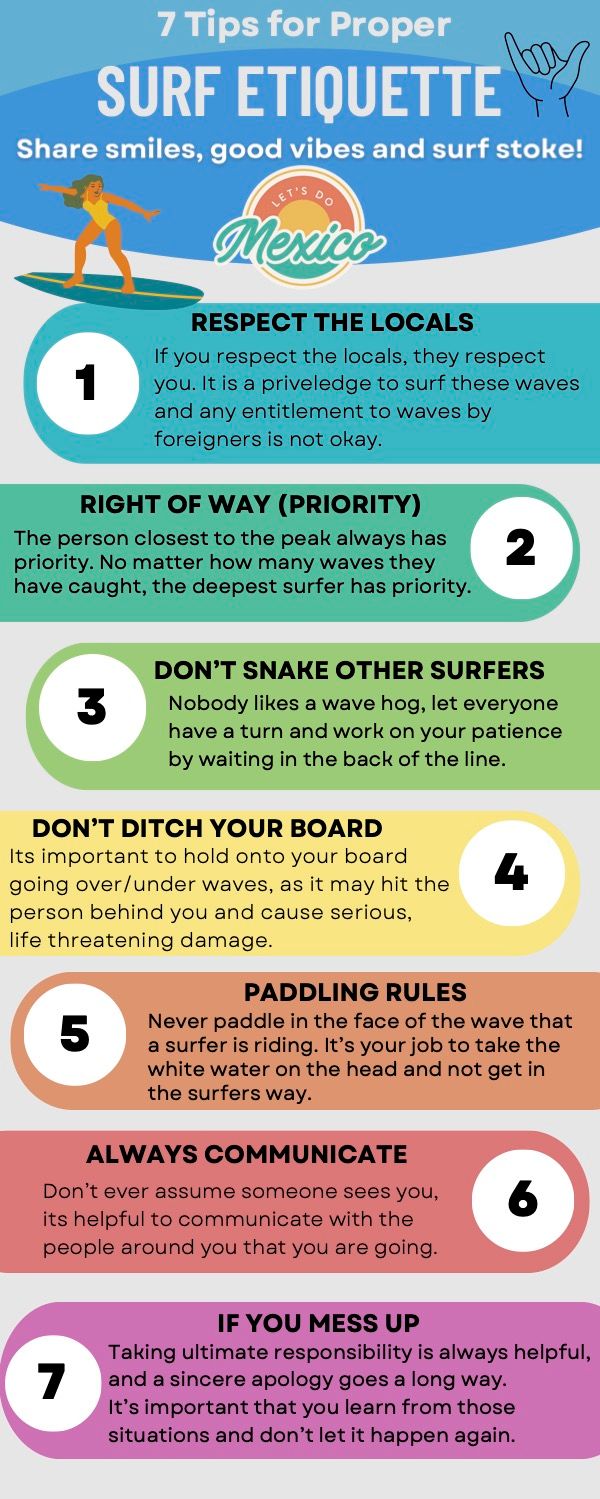Surfing is not just a sport; it's a way of life. It's about connecting with nature, challenging yourself, and, perhaps most importantly, respecting the ocean and your fellow surfers. Proper surf etiquette is crucial for maintaining a safe and enjoyable surfing experience for everyone in the lineup. Whether you're a seasoned pro or just starting out, here are seven essential tips for mastering surf etiquette:
1. Respect the Locals: When surfing at a new spot, always show respect to the locals. Understand that surfing is often deeply ingrained in local culture, and it's a privilege to surf their waves. Avoid any sense of entitlement and be mindful of local customs and rules. Respect the lineup, wait your turn, and you'll earn the respect of the locals in return.
2. Respect the Right of Way (Priority): The golden rule of surfing etiquette is to respect the right of way. The person closest to the peak of the wave always has priority. It doesn't matter how many waves they've caught; if they're in the best position to catch the wave, it's theirs. Remember, the deepest surfer has the right of way. This is one of the perks of being the best surfer; they have put in the most time and had to work to be able to take off so deep. The deepest surfer has earned the respect to be able to have priority.
3. Don't Snake Other Surfers: Wave hogging is a surefire way to earn the ire of your fellow surfers. Respect the lineup and wait your turn. Trying to sneak in front of others or consistently paddling around them to catch more waves is not only disrespectful but also disrupts the flow of the session. Practice patience and share the waves generously.
4. Don't Ditch Your Board: Holding onto your board is not only for your safety but also for the safety of others. If you lose control of your board, it can become a dangerous projectile, potentially causing serious injury or even death to fellow surfers. Always maintain control of your board, especially when going over or under waves.
5. Paddling Rules: When paddling out, always be aware of other surfers around you. Never paddle in the path of a surfer riding a wave. It's your responsibility to take the whitewater on the head and avoid obstructing other surfers' rides. Respect their space and give them the room they need to maneuver safely.
6. Always Communicate: Communication is key in the lineup. Never assume that other surfers see you or know your intentions. Use clear signals and verbal cues to indicate your next move, whether you're paddling for a wave or signaling that you're going. By communicating effectively, you can avoid collisions and ensure a smoother surfing experience for everyone.
7. Take Responsibility and Learn from Mistakes: We all make mistakes from time to time. If you inadvertently breach surf etiquette or cause a disruption in the lineup, take ownership of your actions. Offer a sincere apology if necessary and strive to learn from the experience. Taking responsibility demonstrates maturity and respect for your fellow surfers.
In conclusion, mastering surf etiquette is essential for fostering a positive and respectful surfing community. By following these seven tips, you'll not only enhance your own surfing experience but also contribute to a safer and more enjoyable environment for everyone in the lineup. So next time you paddle out, remember to respect the right of way, communicate effectively, and always show respect to your fellow surfers and the ocean. Happy surfing!


